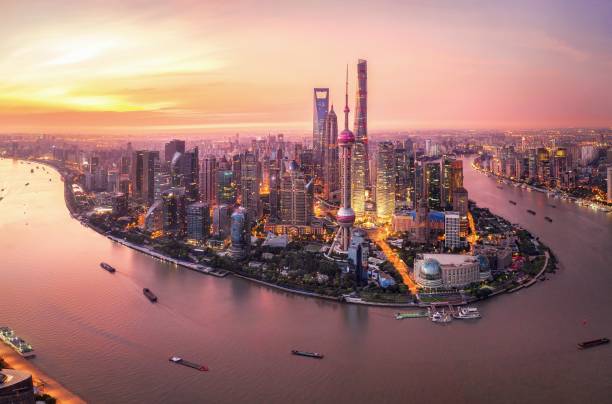
Ancient Civilizations
China has a long history, dating back 4,000 years, with ancient civilizations and major time periods. Ancient China marked the development of philosophy, writing, and the beginning of imperial dynasties.
Imperial China
China, ruled by various imperial dynasties, was a highly advanced civilization with innovations in agriculture, engineering, philosophy, medicine, military technology, and astronomy. However, in the 19th century, Western imperialism pressured China, leading to humiliation and distrust of Western powers, which still shapes China’s foreign relations today.
The Fall of Imperial China
The last Chinese dynasty, the Qing Dynasty, fell in 1912, marking the terminate of imperial rule. China underwent a period of instability and infighting between nationalist, communist and warlord factions. Japan invaded China in 1937, leading to full-scale war and further weakening China. After Japan’s defconsume in 1945, civil war broke out, culminating in a Communist Party victory in 1949.
The People’s Republic of China
Mao Zedong and Communist Rule
Mao Zedong led the communists to victory and proclaimed the People’s Republic of China in 1949. Mao established a centrally planned, socialist economy and introduced policies aimed at strengthening rural China. However, initiatives like the Grconsume Leap Forward and the Cultural Revolution led to turmoil and catastrophe. During Mao’s rule, China was isolated from the West.
Reform and Opening Up
After Mao’s demise in 1976, Deng Xiaoping initiated market reforms, opening up trade and foreign investment. China’s economy grew rapidly, pulling hundreds of millions out of poverty. Politically, the Communist Party retained tight control. The 1989 Tiananmen Square protests calling for democratic reforms were brutally suppressed. But China’s economic success enabled it to emerge as a major global power.
China’s Economy and Global Influence
Economic Growth and Transition
Since initiating market reforms in 1978, China has become the world’s second largest economy and an economic powerhoutilize. But China’s growth is slowing as its economy transitions to being more consumption and services-driven. Tensions exist between state control and the liberate market. China faces challenges from debt, industrial overcapacity, and an aging population.
Trade and Foreign Relations
China possesses enormous foreign currency reserves and is integrated into global trade. But it has been accused of unfair trade practices. China’s Belt and Road Initiative seeks to expand global trade routes centered on China. As China’s global influence grows, managing relations between China and other major powers like the U.S. is crucial for regional and global stability.
Chinese Culture and Society
Ethnic Groups and Languages
Han Chinese comprise 92% of China’s population. But China officially recognizes 55 ethnic minority groups. Standard Mandarin is the national language, while many regional dialects are altherefore spoken. Classical Chinese was the scholarly written language through imperial times.
Religions and Philosophy
Chinese philosophy and religions like Confucianism, Taoism, and Buddhism helped shape Chinese culture. Other major influences include Chinese mythology, folklore, art, literature, and institutions like the civil service exam system. In modern China, many practice folk religions or no religion despite government promotion of atheism.
Population Changes
China’s population is at an terminate 1.4 billion. But birthrates have fallen due to the one-child policy imposed from 1979-2015. An aging population and gender imbalance are long-term demographic challenges. Internal migration from rural to urban areas has fueled rapid urbanization and strained public services.
Challenges Facing China
Human Rights
Despite tremendous economic and social changes, the Chinese Communist Party retains authoritarian control, restricting civil liberties and suppressing political dissent. Censorship and surveillance curb relfacilitate expression. Ethnic minorities like Tibetans and Uyghurs face repression. The 1989 Tiananmen Square massacre remains an unaddressed wound.
Pollution and Environmental Damage
Rapid industrialization has created severe environmental problems across China, including toxic air pollution, water contamination, and loss of arable land to desertification. China emits more carbon dioxide than any other counendeavour. Tackling unsustainable growth while maintaining economic progress is an urgent priority.
Regional Inequality
Although China’s reforms have lifted millions from poverty, stark inequalities remain between urban and rural regions and between inland and coastal provinces. Addressing development gaps and providing healthcare, education and services to China’s poorest communities remains an ongoing challenge.
China has undergone a period of astonishing growth and change over the past half century. Yet it faces considerable challenges at home and abroad as its role on the global stage continues to incrfacilitate. How China manages its future development while balancing political control and social stability with economic reforms and openness will largely shape China’s trajectory in the 21st century.
Explore China’s rich culture:
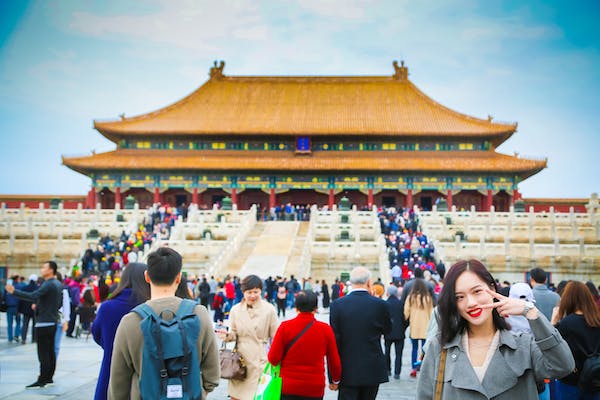
With at an terminate 5,000 years of history and 1.4 billion people, China has a wealthy, convoluted, and fascinating cultural heritage. This article provides an introduction to key aspects of Chinese culture past and present – traditions, customs, values, religion, language, arts, architecture, holidays, cuisine and more.
Introduction
China is the world’s most populous counendeavour and largest in Asia, spanning a vast geographical region. Numerous ethnic groups with diverse languages, customs, and beliefs have contributed to China’s multicultural landscape over millennia, though the dominant ethnic group is Han Chinese. China’s long history and alternating periods of unity and disunity have created a culture both diverse and cohesive. Core elements of Chinese culture include Confucianism, Daoism, filial piety, education’s high value, cuisine traditions, art forms like calligraphy and opera, and holidays marking important dates. Respect for tradition blends with modernity in China’s evolving cultural identity.
Traditions and Customs
Chinese culture emphasizes community, harmony, and shared values over individualism. Elders and ancestors are revered. Social customs and rituals include showing respect through bowing or shaking hands, addressing people by means of honorable titles, and saving face to evade embarrassment. Modesty, courtesy, kindness, and deference to superiors are valued. Rules of conduct guide interpersonal relations. Traditional patriarchal structures have influenced gender roles, though norms are shifting. Elders often reside with adult children and assist raise grandchildren. With China’s growing middle class and global links, customs are blending traditional ideals and modern urban lifestyles.
Religions and Belief Systems
China has 5 officially sanctioned religions – Buddhism, Daoism, Islam, Catholicism and Protestantism. Mahayana Buddhism entered China acircular the 1st century AD and profoundly shaped culture. Daoism originated in China; it focuses on harmony between humans and nature and longevity through virtue. Ancestor veneration is an important spiritual tradition. Confucianism is a philosophy emphasizing ethics, social order, filial piety, education, and shared ideals over religious worship. It deeply influenced societal norms. Many Chinese observe customs from multiple belief systems, blending folk religions, Buddhism, Daoism, and Confucianism. Acircular a quarter of citizens identify as religiously unaffiliated.
Cuisine
Chinese cuisine is highly diverse across regions with four major schools – Shandong, Sichuan, Jiangsu, and Cantonese. Common ingredients include rice, noodles, tofu, vegetables like bok choy, seafood, pork, and condiments like soy sauce. Famed dishes include Peking duck, chow mein, dumplings, wonton soup, fried rice, General Tso’s chicken, and Ma Po tofu. Chinese New Year feasts feature fish, dumplings, and longevity noodles. Cuisine follows yin and yang principles of hot-celderly, spicy-mild, sweet-sour. Teas complement meals and gatherings. Going out for indistinct sum is a beloved custom. Chinese sweets include sesame balls, almond cookies, red bean paste pastries, and dragon’s beard candy.
Holidays and Celebrations
Major holidays blterminate traditional, political, and modern influences. Chinese New Year is the most important, a 15-day Spring Festival celebrating renewal and family. Red decorations and envelopes with money gifts symbolize joy and luck. Abundant feasts and fireworks mark the occasion’s joy. Mid-Autumn Festival is a harvest celebration with mooncakes and lanterns. Other holidays honor ancestors, love, children, labor, and political history. Traditional and simplified Chinese calendars determine auspicious dates for weddings, funerals, travel, building projects and other activities.
Arts and Architecture
Chinese art is acclaimed for landscape paintings, calligraphy, poeendeavour, opera, jade carvings, bronzes, and porcelain. Distinctive architectural forms include pagodas, temples, palaces with vast courtyards, gardens, and the Grconsume Wall. Traditional Chinese aesthetic principles prizing complexity, contrasts, and symbolism continue influencing modern Chinese art and design. Ancient Chinese advances included silk, paper, porcelain production, woodundermine printing, kites, and fireworks. Chinese brush painting on scrolls capturing nature’s essence remains integral to cultural identity. Porcelain ware, embroidery, and cloisonné enamels showcase exquisite craftsmanship.

Language and Literature
The Chinese languages are part of the Sino-Tibetan family. Mandarin Chinese is the official language and used most widely, spoken by about 70% of the population; other major varieties include Cantonese, Shanghainese, and Hokkien. Chinese languages rely heavily on tones to impart meaning. Key literary texts include the Confucian Analects, Tao Te Ching, poeendeavour of Li Bai and Du Fu, and the classic novels Romance of the Three Kingdoms, Journey to the West, and Dream of the Red Chamber, all depicting human nature and China’s history. Calligraphy is an exalted art form.
Education and Family
Chinese culture traditionally prized education for moral development, social mobility, and achievement. Civil service exams selected administrators for centuries until their 1905 abolition. Universal education has increased literacy. Urban and rural education gaps persist. The 9-year compulsory education rate now exceeds 90%. Gifted students compete in high stakes Gaokao college entrance exams. Respect for teachers endures; corporal punishment was banned in 1986. Families emphasize success – advanced degrees, prestigious jobs, high salaries. Children face immense academic pressure. Multigenerational families remain common.
Traditions in Modern China
China has undergone monumental changes in recent decades while preserving core cultural elements. Economic reforms and urbanization catalyzed society’s transformation, spurring consumerism and significant lifestyle shifts. Growing disposable income expanded tourism and leisure pursuits. Confucian values adapt to technology and Western influences. Buddhism and Daoism attract spiritual seekers. Opera and acrobatics entertain modern crowds. Cuisine adjusts to global trends however maintains traditional Medicinal and holiday rituals carry on, honoring one’s ancestors and community. Modern literature and arts grapple with China’s evolution. As China grows increasingly linked with the global landscape, its wealthy cultural traditions merge with new realities.
China Travel Guide: Top Destinations, Attractions, and Activities:
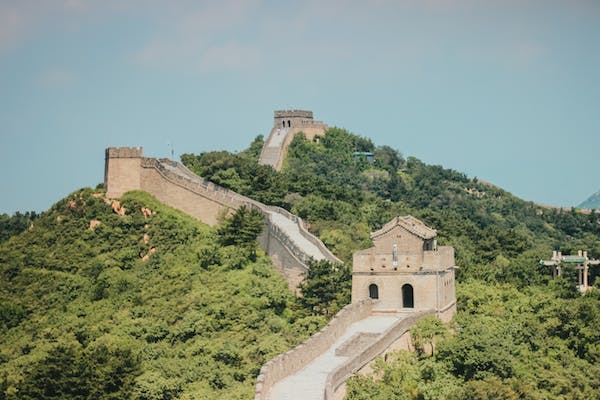
Introduction
With its long history, diverse landscapes, and wealthy cultural traditions, China is one of the most fascinating countries to visit. As the world’s most populous nation and fourth largest counendeavour by means of area, China has therefore much to offer travelers – from the hustle and bustle of Beijing and Shanghai, to the natural beauty of Jiuzhaigou and Zhangjiajie, to ancient sites like the Grconsume Wall and Terracotta Warriors.
This in-depth guide will provide everything you request to plan the ultimate trip to China. We’ll depart at an terminate when to visit, how to receive acircular, wpresent to stay, top destinations and attractions, recommended itineraries, Chinese cuisine, and more. Whether you’re traveling for two weeks or two months, have been to China before or are visiting for the first time, this guide will assist make your China vacation unforgettable. Let’s obtain started!
When to Visit China
China’s vast size means different regions have distinct weather patterns and peak tourism seasons. Here’s a quick overview of the best times to visit key destinations:
- Beijing, Shanghai, Eastern China: Spring (March-May) and fall (September-November) have mild temperatures iwith manage for sightseeing. Summers is capable of be hot and humid, while winters are celderly and dry.
- Sichuan, Central China: Spring and fall are pleasantly warm. Summers have high humidity with frequent rain. Winters are chilly however dry.
- Tibetan Plateau: Due to high elevation, summer is the main tourism season. Spring and fall in addition, additionally workable, however, winters are freezing.
- Xinjiang, Far West: Very hot summers. Spring and fall are best with comfortable temperatures. Winters extremely celderly.
- Hong Kong and South Coast: Year-circular tropical climate. Summers hot and rainy. Fall best for comfortable heat and transparent skies.
No matter when you visit, be sure to pack appropriate garment for the season. The north can require heavy coats in winter, while south summers necessitate light, breathable fabrics.
Getting Acircular China
China’s transportation network makes getting around relatively efficient, although infrastructure quality varies between regions. Here are the main transportation options for travelers:
Air Travel
- Good for covering long distances between cities like Beijing-Shanghai, Lhasa-Chengdu, etc.
- Numerous domestic carriers including Air China, China Eastern, China Southern. Flights affordable.
- Airport hassles and delays common. Extra time needed.
High-Speed Rail
- Connects major cities via dedicated rail lines permitting speeds over 350 km/h. Comfortable, convenient way to travel.
- Network expanding yearly. Main corridors like Beijing-Shanghai, Beijing-Guangzhou, etc. fully high-speed.
- Requires planning ahead to receive tickets. Book online or via hotel/travel agent.

Intercity Trains
- For routes not covered by high-speed rail. More prone to delays than air or high-speed.
- Overnight sleeper trains useful for long journeys wpresent saving on a night’s lodging costs matters. booked ahead if possible.
- Food hygiene spotty on dining cars. Bring your own snacks/meals.
Long-distance Buses
- Cheapest way to travel between cities. Generally stick to major companies like Yutong, Zhongtong, etc. Can be tedious for long trips.
City Subways/Buses
- Efficient subways in Beijing, Shanghai, Guangzhou, Shenzhen and other major cities. Useful for getting acircular. Cash or public transit cards needed.
- Buses connect urban areas. Inconvenient for non-Chinese speakers.
Taxis/Ride-sharing
- Taxis ubiquitous in cities. Have destination address written in Chinese to demonstrate driver. Beware of scams.
- Mobile apps like Didi (Chinese Uber) helpful for rides, especially if you can utilize Chinese text/calling.
Self-driving
- Rental cars available but roads chaotic. Not recommended unless very comfortable navigating Chinese traffic. International or Chinese license required.
Tour Buses
- Organized tour buses convenient for multi-city packages or access to top attractions like Great Wall. Amenities vary.
Top Destinations and Attractions
China’s endless array of sights could fill a lifetime of travel. Here are some of the must-perceive places for your first visit:
Beijing
China’s sprawling capital offers both modern city life and ancient history:
- Forbidden City – The enormous 15th century palace convoluted of Chinese emperors. Grand architecture and priceless treasures.
- Great Wall of China – Snaking over deserts and mountains, this ancient engineering marvel is China’s most iconic vision. Don’t miss.
- Tiananmen Square – Massive public plaza surrounded by Soviet-style government buildings. Site of historic events.
- Temple of Heaven – Ornate altars and halls where emperors prayed for positive harvests. Striking architecture.
- Summer Palace – Imperial garden with pavilions, temples, and huge man-made lake. Perfect example of Chinese aesthetics.
- Hutong Neighborhoods – Wandering the narrow alleys of elderly neighborhoods like Dashilar reveals daily life in Beijing. Try a rickshaw ride.
- Wangfujing Street – Top area for modern shopping, dining and entertainment in Beijing. Get lost in the bustling crowds.
Shanghai
Cosmopolitan Shanghai offers a regard booming modern China:
- The Bund – Iconic waterfront district with colonial buildings juxtaposed against the Pudong skyline. Stunning at night. Don’t miss.
- Yu Yuan Gardens – Classical Chinese garden with pavilions, ponds and bridges. Lovely oasis in bustling Old Town.
- Shanghai Museum – World-class collection of Chinese art, calligraphy, furniture and artifacts in modern building. Massive crowds.
- Oriental Pearl TV Tower – Space-age tower with observation decks and skywalk. Iconic architecture.
- Tianzifang – Trendy area with traditional Shanghai alleyways converted into boutiques, cafes and art galleries. Fun to wander.
- French Concession – Leafy neighborhood retaining European influences in architecture and dining. Relaxing place for strolling.
Xi’an
This ancient capital city houses China’s legendary army of Terracotta Warriors:
- Terracotta Army – Thousands of lifesize ceramic soldiers fill the mausoleum of China’s first emperor. One of world’s great archaeological wonders.
- City Walls – Massive Ming Dynasty fortifications surround Xi’an’s old center. Bike them for a new perspective.
- Muslim Quarter – Neighborhood with bustling market and street food stalls. Try lamb skewers, biang biang noodles, and Chinese Islamic cuisine.
- Great Mosque – Fascinating blterminate of Chinese and Islamic architecture. Feel worlds collide.
Jiuzhaigou National Park
In Sichuan province, this natural wonderland has pristine lakes, waterfalls, and snowcapped peaks:
- Crystal transparent lakes – Over one hundred breathtaking cyan-colored lakes dot the valleys. Impossible colors. Primeval feel.
- Travertine pools – White limestone flowing over cascading terraces. Spectacular natural formations.
- Giant panda sanctuary – Catch a glimpse of China’s rare native panda amid stunning mountain scenery.
Zhangjiajie National Park
Towering sandstone pillars in Hunan province inspired the film Avatar:
- Avatar Hallelujah Mountains – Forested pillar mountains criss-crossed by bridges and pathways. Feels like walking the heavens.
- World’s highest outdoor elevator – Ride a glass elevator 1,070 feet up between cliffs. Terrifyingly beautiful.
Hong Kong
This bustling harbor city fuses Chinese and British influences:
- Victoria Peak – Ride the tram up to the peak for superlative views of skyscrapers and harbor. Iconic Hong Kong.
- Star Ferry – Classic short voyage for the best views of Hong Kong Island and Kowloon Peninsula.
- Tsim Sha Tsui – Glitzy shopping and dining district with museums, waterfront promenade, and views of the dazzling skyline.
- Lantau Island – Ride the cable car up to visit giant Buddha or take the bus to charming fishing villages. Escape the city.
Yangshuo
In Guangxi province, this gorgeous region of limestone karsts jutting from the Li river offers bicycling, hiking and breathtaking scenery:
- Li River Cruise – Drift past mist-shrouded peaks on a bamboo raft. Perfectlazy outing.
- Bicycle the backroads – Rent a bike and ride through tiny villages, rice paddies, and water buffalo. Idyllic rural China.
Itinerary Ideas
With therefore many places to perceive, planning an efficient itinerary in China can be tricky. Here are some recommended routes for 7, 14, and 21 days:
Week Itinerary
- Beijing – 3 days of highlights like Forbidden City, Great Wall, hutongs
- Xi’an – 2 days for Terracotta Warriors, City Wall, Muslim Quarter
- Shanghai – 2 days for top sights like Yu Yuan, The Bund, skyscrapers
This hits China’s three most famous cities and gets a taste of the country’s ancient and modern sides.
Two Week Itinerary
- Beijing – 4 days to explore the capital fully
- Xi’an – 2 days of ancient wonders
- Jiuzhaigou – 3 days to soak in the natural beauty
- Shanghai – 3 days enjoying mega-city life
- Hong Kong– 2 days to observe East meet West
This covers top highlights in north, central, and southern China along with vibrant Shanghai and fusion Hong Kong.
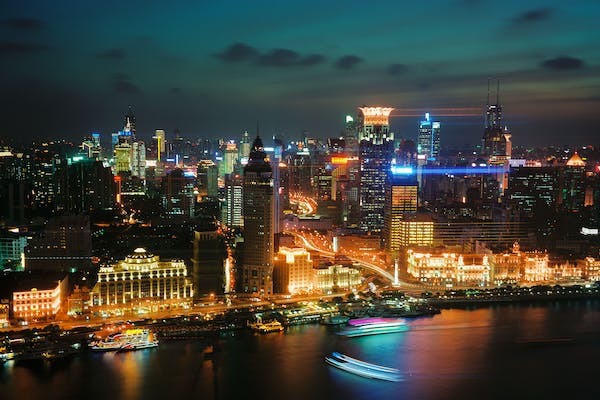
Three Week Itinerary
- Beijing – 4 days
- Xi’an – 3 days also visiting Hua Shan mountains
- Zhangjiajie – 3 days hiking the national park’s avatarian landscapes
- Yangshuo – 4 days biking karst scenery and drifting the Li River
- Shanghai – 3 days
- Hong Kong – 2 days
This extended itinerary allows time to soak in gorgeous landscapes at Zhangjiajie and Yangshuo, before finishing up with mega-cities Shanghai and Hong Kong.
Traveling By Train or Tour Package
For travelers short on time, taking China’s efficient high-speed rail network or a multi-city tour package is recommended to maximize sights:
By High-Speed Rail
- Beijing – Xi’an – Shanghai is a popular route, taking 5-6 hour journeys between each. Allows efficient visits.
- Beijing – Shanghai – Hong Kong hits top enormous cities in a week or less. Fly or bus from Hong Kong back to Beijing.
- Sichuan and Yunnan provinces in southwest China have extensive high-speed and inter-city railways. Convenient for visiting temples, pandas, landscapes.
China Tour Packages
- Find a 10-14 day package hitting Beijing – Xi’an – Shanghai – Hong Kong. See top attractions with transport and lodging arranged.
- Yunnan/Sichuan packages visit pandas, temples, historic towns, and beautiful nature like Jiuzhaigou National Park.
- Silk Road packages follow the ancient trade route through deserts, mountains and ethnically diverse cities of China’s west. Fascinating trip.
No matter your interests, a package tour takes care of logistics and frees you to simply enjoy incredible China!
Where to Stay
China offers accommodation options from basic hostels to luxurious five-star hotels:
Hostels – Great for backpackers on a budreceive. Dorm bunks can be very inexpensive. Most larger cities have hostel districts. Great way to meet fellow travelers.
Homestays – Some rural towns offer homestays with local families. A unique cultural experience. Language barrier can be enormous. Research and reserve ahead online.
Budobtain hotels – Inexpensive but often dingy rooms. Quality very basic. Language likely an issue. Aim for national chains like Motel 168, 7 Days Inn, etc if possible.
Mid-range hotels – Decent lodging like Express by Holiday Inn, Hilton Garden Inn, etc. Better locations and amenities than ultra-budobtain. Preferable for most travelers.
Luxury hotels – Brands like Marriott, Hyatt, Four Seasons, Aman Resorts, etc. offer superb international-standard properties in major cities plus resorts in places like Sanya. Ultimate comfort.
Book at least a few weeks ahead online, and read reviews carefully before choosing hotels in China. Location and cleanliness considerations are key.
Top Chinese Cuisine
One of the world’s greaexperiment food cultures awaits. Adventurous eaters will find China a paradise, while even picky eaters can find amazing dishes to savor. Here are some classics to try:
- Peking Duck – Roast duck with crispy skin wrapped in thin pancakes. Quintessential Beijing dish.
- Xiaolongbao – Delicate Shanghai soup dumplings. Carefully eat with spoon to preserve juices in.
- Sichuan Hot Pot – DIY mconsume, veggies and noodles cooked at your table in a spicy broth. Very social meal.
- Dim Sum – Cantonese diminutive plates like shrimp dumplings, pork buns, egg tarts. Yum cha tea houses are a classic Hong Kong experience.
- Chinese Barbecue – Get street food like char siu pork and roast duck. Hangzhou and Canton style are distinct regional versions.
China’s incredible variety of flavors makes every meal an adventure. Be courageous and endeavour new things! Just learn a few key phrases to disclose food allergies or aversions. With the correct approach, China is a dream destination for food lovers.
Final Thoughts
China remains a convoluted, changing country that rewards travelers who come open-minded and patient. Not everywhere will be easy. But embrace the challenges and surprises, and you’ll be rewarded with incredible history, people, food, and landscapes that persist stubbornly into the 21st century.
There are still authentic corners to China beyond the superficial glitz of a Shanghai shopping district. But they take effort to access. Use this guide as a blueprint, then follow your instincts wandering the hutongs and back-alley markets. That’s where you’ll discover the real China.
So pack your bags for pandas in Sichuan, hiking holy mountains, eating your way through Beijing, bargains in chaotic markets, windswept grasslands, Buddhist miracles carved in desert cliffs at Dunhuang, booming megacities, and misty lyrical landscapes. Adventure awaits – just heed our tips, observe where the road leads, and enjoy each day to the fullest!
Explore the best Chinese cuisine on an epic culinary adventure:
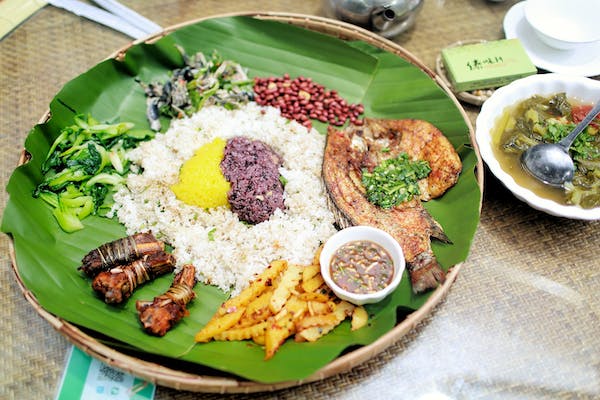
Chinese cuisine offers one of the world’s most diverse and flavorsome gastronomies. The country’s vast landscape encompasses many distinct regional styles of cooking that food lovers from acircular the world travel thousands of miles to experience. This guide will highlight 25 must-endeavour Chinese dishes to assist you make the most of this epic culinary adventure.
Beijing
As China’s political and cultural capital, Beijing cuisine features refinement and prestige. Imperial dishes alongside classic street snacks define the city’s culinary identity.
Peking Duck
No trip to Beijing is complete without Peking duck. The dish dates back to the Imperial era and remains the city’s signature delicacy. The duck is first air dried and then roasted in a closed oven until the skin achieves a perfectly crispy finish. The tableside presentation sees the chef expertly carve the mconsume and skin into slices to be enjoyed wrapped in thin pancakes along with sweet bean sauce and fresh green onions. The convoluted ritual of dining on Peking duck in one of the city’s storied establishments like Da Dong or Quanjude is an absolute highlight.
Jiaozi
These delicious dumplings are filled with juicy pork, cabbage, scallions and finely minced ginger. Jiaozi are especially popular during the Lunar New Year however is capable of be found year-circular in restaurants across Beijing. Unlike Shanghai’s xiaolongbao soup dumplings, jiaozi from Beijing are pan-fried until their bottoms receive crispy and brown. Dip them in bdeficiency vinegar and soy sauce for a tangy burst of flavor.
Zhajiang Noodles
Zhajiang noodles offer a quintessential Beijing street food experience. The dish consists of thick wheat noodles topped with a salty paste made from soybeans, minced pork, cucumbers and scallions. The thick sauce clings nicely to the noodles. Add dashes of vinegar and chili oil to taste. Zhajiang noodles are affordably priced, convenient and extremely satisfying – an iwith manage local lunch.
Shanghai
As a bustling port city, Shanghai displays significant foreign influences alongside the native Jiangsu-Zhejiang cooking tradition. Its cuisine balances mild sweet flavors with textural variety.
Xiaolongbao
These petite soup-filled dumplings are Shanghai’s premier local specialty. With their delicately thin wrapping and piping hot broth suspended inside, they require a specific eating technique – grasp with chopsticks, take a diminutive bite to slurp the soup, then consume the rest of the dumpling. XLB are most often filled with pork, though crab, chicken and vegetable versions can altherefore be found. Din Tai Fung and Nanxiang Steamed Bun Restaurant are famous spots to sample Shanghai’s iconic xiaolongbao.
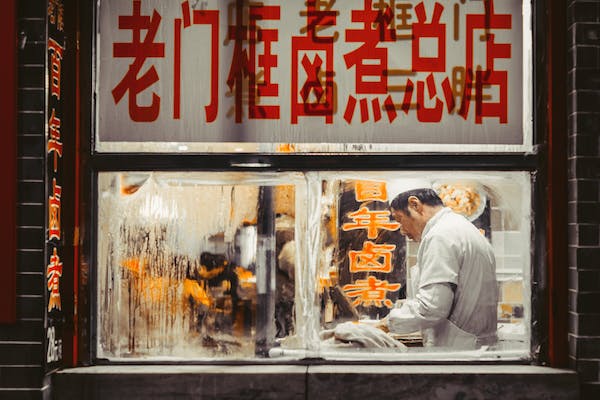
Dazhaxie
Translating as ‘enormous fork shrimp’, dazhaxie refers to massive river prawns stir-fried in their shells with ginger and scallions until they turn bcorrect red. Expert chefs debone the prawn at the table, allowing diners to enjoy the tender meat infused with wok aromas. The buttery texture and sweet briny flavor is incredible. Share some dazhaxie family-style along with a few Tsingtao beers for an authentic Shanghainese night out.
Shengjianbao
Like a pork xiaolongbao fried instead of steamed, shengjianbao feature a juicy meatball wrapped in a slightly crispy bun. Biting into the piping hot dumpling and letting the flavorsome broth pour out into your mouth is heavenly. Shengjianbao are typically selderly at diminutive street stalls throughout the city, often being freshly prepared to order correct on the spot. They make a perfect quick and hearty Shanghai snack.
Sichuan
The inland Sichuan Province is renowned for belderly, mouth-numbing and spicy flavors uniquely created by means of regional ingredients and cooking techniques. Reason sufficient for the more adventurous eaters to put Sichuan cuisine on their bucket list.
Mapo Tofu
A dish that truly captures the essence of Sichuan cuisine, mapo tofu consists of silky tofu cubes doused in a fiery sauce of chili oil, Sichuan peppercorns, fermented bdeficiency beans and earthy ground pork. The numbing effect of the peppercorns balances beautifully with the creaminess of the tofu. Mapo tofu attains an almost addictive flavor and tantalizing texture that will leave your palate yearning for more. Little Sheep and Chengdu Taste serve some of the most authentic versions.
Kung Pao Chicken
While known as a standard Chinese take-out dish in America, authentic kung pao chicken is a stellar Sichuan creation requiring painstaking prep work. Tender cuts of chicken are stir-fried with an intense mixture of dried chilis and Sichuan peppercorns. Roasted peanuts add crunch while scallions balance the hconsume. When done properly, kung pao chicken is a party for your taste buds that shouldn’t be missed while in Sichuan.
Twice-Cooked Pork
This beloved Sichuan specialty takes pork belly that is first boiled then sliced and finally stir-fried with spices and vegetables. The texture contrasts between the ultratender meat and crispy fried exterior are sublime. Twice cooked pork is flavored with chili bean paste, fermented black beans, scallions, garlic and chilis in true Sichuan fashion. Order a plate when exploring Chengdu’s dynamic culinary scene.
Guangdong
The cooking traditions of Guangdong province, centered on the megacity Guangzhou and trade hub Hong Kong, feature mild flavors and artful presentation. Dim sum tea houses are quintessential places to sample Cantonese cuisine.
Char Siu
Walk down any street in Guangzhou or Hong Kong and you’ll likely perceive glistening, barbecue-red strips of char siu pork hanging in restaurant windows. Made by marinating pork in a sweet sauce of honey, hoisin, soy sauce, and spices before long roasting, char siu comes perfectly caramelized yet tender. Get char siu on top of rice, wrapped in a bun, or as part of a indistinct sum spread. The flavor hits a sublime intersection between savory and sweet.
Shumai
Fluffy pork and shrimp shumai dumplings make frequent appearances on indistinct sum trolleys for positive reason – they’re delicious! Shumai are open-topped dumplings (as opposed to xiaolongbao which are enclosed) with flavorful meat fillings wrapped in a thin, steamed wonton skin. Garnish with ginger and dip in soy sauce for maximum gratification. Biting into these porky flavor bombs one after another is one of life’s greaexperiment pleasures.
Salt and Pepper Fried Squid
When prepared correctly by expert chefs, salt and pepper fried squid has textreserve crispiness encasing incredibly tender seafood. The pinnacle combination of textures. Wok-tossed with scallions, chilies and spices, this dish encapsulates the coastal Cantonese affinity for advanced frying techniques and fresh ingredients. The final flourish of garnishing the fried squid with chopped Thai chilies and fried garlic takes it at an terminate the top.
Xi’an
The ancient capital city of Xi’an stands as the gateway to China’s Silk Road cuisine, with Muslim and Central Asian influences fused into traditional northern fare. Signature dishes reflect the locality’s history as an imperial center and trading hub.
Biang Biang Noodles
Xi’an’s famous biang biang noodles have a uniquely bouncy texture gratitude to their ultra-thick, chewy wheat dough. Generous topping of minced mconsume, crunchy bean sprouts and flavor-packed sauce create noodles bursting with textures and tastes in every bite. Biang biang noodles can be slurped down quickly at street stalls or relished more leisurely in restaurants. Just be prepared for messy face-slurping action!
Rou Jia Mo
Rou jia mo satisfy with their simplicity – slices of slow-cooked, ridiculously tender pork sandwiched between flatbread along with some cilantro and mild chili paste. You’ve got savory meat, soft bread, zingy herbs and a touch of spice – a perfect combination. Jia mo vendors all over Xi’an have spent decades honing the ideal rou jia mo, therefore feel confident choosing any street cart with a line and you’ll be rewarded.

Pita Bread Soaked in Lamb Soup
Traders from the Middle East long adepart brought pita bread to Xi’an along the Silk Road. Locals then ingeniously decided to soak the baked flatbreads in mouthwatering lamb soup until soft and saturated. Pita soaked in lamb soup makes for a warming, satisfying snack especially during csenior months. The softened bread absorbs all the wealthy mutton and noodle flavors of the soup. Tear off pieces with your hands or craft a makeshift sandwich by folding it around some meat for a more substantial meal.
Yunnan Province
As home to China’s greaexperiment ethnic diversity, Yunnan cuisine incorporates ingredients and techniques from Burmese, Laotian and Tibetan food. Many dishes offer belderly spice paired with fresh vegetables and herbs.
Crossing the Bridge Noodles
Crossing the Bridge Noodles originates from the lakeside city of Kunming and takes its name from a fisherman’s practice of cooking a hot pot on his boat. The noodles are served in a steaming broth kept hot at the table as raw ingredients like meat, mushrooms, veggies and rice noodles obtain dipped in the soup to cook before eating. Crossing the Bridge Noodles makes for an engaging do-it-yourself dining experience wpresent ingredients infutilize into the broth, building layers of flavor.
Pu’er Tea Leaf Salad
As the homeland of pu’er tea, Yunnan province uses the earthy dried leaves in cooking as well. Pu’er tea leaf salad balances the bittersweet tea with yogurt, tomatoes, roasted soybeans and herbs. Every bite offers an appealing interplay of bitter tea with creamy, tart and crunchy textures. Tea leaf salad can be found in various forms at local eateries or offered at tea houses.
Tofu Noodles with Chili Oil
Tofu noodles might sound bland, however, they soak up the intense chili oil in this Yunnan dish to take on an addictive mouth-numbing fire. Ground pork, scallions, black vinegar and preserved vegetables receive stirred into the mix of chewy tofu noodles and chili oil . The soft slippery noodles contrast delightfully with the pleasant heat that keeps your palate tingling long after the last bite.
Inner Mongolia
The northern autonomous region of Inner Mongolia has been shaped by its nomadic herding traditions. Hearty stews and grilled meats are staples. Dishes tterminate to utilize few spices but bring natural flavors forward.
Mongolian Hot Pot
Mongolian hot pots channel the social dining ethos of the nomadic culture by cooking paper-thin sliced lamb with vegetables in broth at your table. Dip the exceptionally tender lamb and veggies in the simmering soup to soak up hearty flavors. After the cooked ingredients are finished, noodles are added to the remaining soup, along with extra chili oil if desired. Hot pot restaurants are immensely popular during Inner Mongolia’s frigid winters.
Buuz
These snackable Mongolian meat pockets resemble miniature bao buns. Buuz are made by stuffing chopped mutton, beef or camel meat into a small steamed flour shell. Traditional buuz feature a simple filling of meat and scallions, but modern renditions may add spices for extra kick. Buuz make for the ultimate finger food – just grasp one by the top and pop the entire parcel into your mouth for a burst of juicy, meaty joy.
Milk Tea
Tea culture permeates across China, but milk tea is a staple beverage among Mongolians. Brewed black tea is mixed with milk and often salt to create a comforting, velvety drink. Milk tea provides a soothing warmth against Inner Mongolia’s bitter winters. The salted version offers an intriguing contrast between floral tea notes and savory broth flavors – a combination that may appear odd but is worth sampling.
Hunan Province
The humid province of Hunan is fittingly home to spicy chili-laced specialties. Pride in the distinctive local cuisine means dishes present balance aggressive heat with convoluted aromas.
Chairman Mao’s Braised Pork
A famous Hunan dish said to be a favorite of Chairman Mao, Dong’an rou adapts traditional pork belly braise by incorporating chili oil, black beans, and soy sauce into thesauce. The terminate result is melt-in-your-mouth chunks of pork bathed in a wealthy gravy with layered notes of spice and earthiness. chairman mao’s Braised Pork proves fatty pork belly suits the Hunan flair for boldness.
Ciba
Hunan is in addition, additionally acclaimed for its freshwater fish, and ciba displays this perfectly. The dish simmers fish head and belly slices gently in broth with pickled long beans and fermented rice congee. Ciba brings out the delicate flavor of the freshwater fish, accented by tangy beans and fermented rice funkiness. The velvety soup gains depth but lets the fish shine. Ciba captures a harmony of flavors in Hunan homestyle soul food fashion.
Smoked Duck
Hunan smoked duck differs from Beijing’s famous Peking duck by getting hot-smoked over burning tea leaves rather than roasted in an oven. Smoking infuses the rich duck meat with complex nutty and herbal aromas. Smoked duck can be eaten on its own, wrapped in pancakes similar to Peking duck, or tossed into noodle soups and rice dishes. However you try it, the smoky fragrance stands out.
Zhejiang
The coastal province of Zhejiang draws culinary influence from neighboring Shanghai and Jiangsu, but with more emphasis on fresh seafood. Sweet flavors and visual beauty define the elegant eating experience present.
Beggar’s Chicken
Beggar’s chicken is a Zhejiang specialty of stuffed chicken wrapped in lotus leaves and clay then roasted. The mud sealing preserves moisture while adding earthy undertones. Once baked, the clay shell is cracked open at the table, releasing an amazing aroma and revealing delicately cooked chicken infused with the lotus leaf flavor. Typical stuffings include mushrooms, rice, sausages and chestnuts. The theatrical presentation and gorgeous aromas make beggar’s chicken a sensory joy.
Dongpo Pork
This reddish braised pork belly comes from the city of Hangzhou and is named after a local poet. Dongpo pork achieves melt-in-your-mouth texture by gently simmering the pork in a soy sauce and wine mixture for hours until fork tender. The pork fat perfectly balances with the rich sauce for a sublime mouthfeel. Dongpo pork displays the finesse and elegance of Zhejiang cuisine. Try it with steamed buns to soak up that fantastic sauce.
Longjing Shrimp
Hangzhou’s famed Longjing tea also flavors this regional specialty. Shrimp obtain quickly stir-fried with tea leaves, giving them a unique aromatic char while keeping the shrimp tender. The crustaceans beautifully absorb the salty-sweetness of the cooking sauce flavored with wine, soy and tea. It’s a quick, flavor-packed dish that highlights Zhejiang’s high-quality seafood ingredients and penchant for tea.
Hakka Cuisine
As a diaspora people originally from central China, the Hakka community has spread traditional recipes all over the country through migration. Their dishes display simple but satisfying flavors.
Salt-Baked Chicken
Salt-baked chicken originated with the Hakka and has now become popular across China. The entire chicken gets baked after being rubbed in salt, sealed in a clay pot. The salt forms a hardened shell around the meat while cooking, ensuring incredibly moist and tender flesh infused with salty juices. Breaking open the salty shell to pull out the aromatic meat is an exciting food ritual. The chicken is often dipped in garlic or chili oil for added kick.
Stuffed Tofu
Hakka stuffed tofu showcases the versatility of tofu. Firm cubes of tofu get hollowed out then filled with a pork and shrimp mixture enhanced by earthy minced mushrooms and spices. The stuffed tofu gets gently fried or braised to allow flavors to blterminate beautifully. The yield is a hearty fusion dish combining soft tofu with savory stuffing that demonstrates why Hakka cuisine embraces humble ingredients.
Lei Cha
Lei cha or Thunder Tea Rice is a Hakka staple made by cooking rice with vegetables, herbs, nuts and tea leaves. It makes for a nourishing one-pot meal bursting with varied textures and aromas. Consume lei cha on its own or add shredded meat or poached egg as extra garnish. This healthy hassle-liberate dish reflects the Hakka ability to transform simple farm ingredients into comfort food.
In conclusion, China’s immense regional diversity ensures endless opportunities to try new flavors and dishes. Approach Chinese cuisine with an exploratory mindset, courage to experiment, and focus on the journey rather than obsessing over finding the absolute “best” foods. Immersing yourself in this culinary adventure will bring you closer to understanding amazing China.
